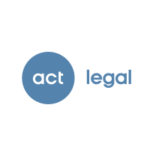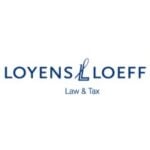-
What is the environmental framework and the key pieces of environmental legislation in your jurisdiction?
There are a number of key pieces of legislation that must be considered when assessing South Africa’s environmental framework, the first of these is the Constitution of the Republic of South Africa, 1996 (“The Constitution”).
The Constitution sets out several rights that are applicable to all citizens. Section 24 of the Constitution sets out various environmental rights. These rights include the right to an environment that is not harmful to their health or well-being, and to have the environment protected, for the benefit of present and future generations, through reasonable legislative and other measures that, prevent pollution and ecological degradation, promote conservation, and secure ecologically sustainable development and use of natural resources while promoting justifiable economic and social development1.
The main piece of legislation is the National Environmental Management Act 107 of 1998, otherwise known as NEMA. NEMA is a principles-based set of legislation and sets key areas of Environmental management. NEMA also allows for various regulations and notices to be promogulated under it2. These include but are not limited to notices of listed activities3 and the regulations surrounding Environmental Impact Assessments4 (“EIA’s”)
There are also several pieces of key subsidiary legislation that fall under the umbrella of NEMA, each of which pertains to a unique area of environmental management. This includes the;
- National Environmental Management: Air Quality Act 39 of 2004 which pertains to air quality and pollution control.
- National Environmental Management: Biodiversity Act 10 of 2004 which pertains to all aspects of biodiversity. This includes the hunting, keeping, transporting, importing, exporting, and management of various fauna and flora.
- National Environmental Management: Integrated Coastal Management Act 24 of 2008 which pertains to the management of South Africa’s coastal areas.
- National Environmental Management: Protected Areas Act 57 of 2003 which designates the various protected areas within South Africa.
- The National Environmental Management: Waste Act 59 of 2008 which sets out various aspects of waste management. This ranges from kinds of waste, management procedures and licensing requirements.
Each of these pieces of legislation have various regulations that are promogulated under them. An example is the Threatened and Protected Species Regulations5 (“TOPS”) which is promogulated under the National Environmental Management: Biodiversity Act 10 of 2004. Section 2 of the TOPS regulations sets out their purpose6. Purposes include;
- The regulation of a permit system that applies to restricted activities involving listed threatened and protected species;
- Providing for the registration of captive breeding operations, commercial exhibition facilities, game farms, nurseries, scientific institutions, sanctuaries and rehabilitation facilities and wildlife traders;
- Providing for the regulation of hunting;
- Providing for the regulation of specific restricted activities;
- Providing for the protection of wild populations;
- Providing for the composition and operating procedure of the Scientific authority.
There are also several other pieces of legislation that form part of South Africa’s Environmental framework, but do not fall under the umbrella of NEMA. This includes legislation such as the
- Marine Living Resources Act 18 of 1998;
- Marine Pollution (Control and Civil Liability) 6 of 1981;
- Marine Pollution (Intervention) Act 64 of 1987;
- Marine Pollution (Prevention of Pollution from Ships) Act 2 of 1986;
- Environmental Conservation Act 73 of 1989, and the;
- Hazardous Substances Act 15 of 1973.
In addition to environmental management, there is also legislation which specifically pertains to the treatment of animals and their welfare. These pieces of legislation also do not fall under the umbrella of NEMA per se, but they are vital in understanding the general environmental framework in South Africa. This legislation includes;
- Animal Diseases Act 35 of 1984;
- Animal Health Act 7 of 2002;
- Animal Identification Act 6 of 2002;
- Animal Improvement Act 62 of 1998;
- The Animals Protection Act 71 of 1962; and
- Veterinary and Para-Veterinary Professions Act 19 of 1982
Footnotes:
1 Section 24(a)(b)(i)(ii)(iii), Constitution of South Africa 1996
2 Section 44, National Environnemental Management Act 107 of 1998
3 Section 24D(1)(a), National Environnemental Management Act 107 of 1998
4 GNR.982 of 4 December 2014: Environmental Impact Assessment Regulations, 2014 (Government Gazette No. 38282)
5 GNR.152 of 23 February 2007: Threatened or Protected Species Regulations (Government Gazette No. 29657)
6 Section 2, Threatened or Protected Species Regulations, 2007
-
Who are the primary environmental regulatory authorities in your jurisdiction? To what extent do they enforce environmental requirements?
The primary environmental regulatory authority in South Africa is the National Department of Forestry, Fisheries and Environment, otherwise known as the DFFE. This department is responsible for the realisation of Section 24 of the Constitution7.
In 2019, the Department of Environmental Affairs (“DEA”) as it was then known as, was handed the responsibility of forestry and fisheries from the Department of Agriculture, Forestry and Fisheries (“DAFF”), hence becoming the DFFE. Additionally, the DAFF was handed the responsibility of Land reform and rural development, thus becoming the Department of Agriculture, Land Reform, and Rural Development (“DALRRD”).
The merging of departments and the transfer of responsibilities has unfortunately led to some confusion and overlap in terms of what each department is supposed to be monitoring. This has led large amount of environmental aspects going unmonitored and in some cases a deflection of responsibility.
Many functions of the National DFFE are delegated to the various provincial environmental authorities8. These provincial authorities are responsible for the activities such as the permitting of hunting and the granting of environmental authorisations at a provincial level.
Under section 24 of NEMA an environmental authorisation must be applied for before a listed activity may commence9. The DFFE as well as the provincial environmental departments also require a person to submit an Environmental Impact Assessment (“EIA”). The relevant authority will then take a decision to issue an environmental authorisation allowing the activity. These environmental authorisations may often have conditions attached to them.
In terms of measures to enforce environmental requirements, the environmental authorities make use of Environmental Management Inspectors (“EMI’s”). EMI’s are appointed by the National Minister under section 31B of NEMA, additionally under section 31C of NEMA, a Member of the Executive Council for environmental affairs may appoint an EMI on a provincial level.
The powers of EMI’s include the ability to;
- Investigate alleged instances of non-compliance with environmental legislation. EMI’s may question witnesses, remove articles or take photographs10;
- Enter a premises to ascertain whether environmental legislation is being followed and seize evidence of criminal activity11;
- Search premises, containers, vessels, vehicles, aircraft and pack animals; seize evidence and contraband12; establish road blocks and make arrests, and;
- Issue compliance notices and admission of guilt fines
Footnotes:
8 Section 42, National Environmental Management Act 107 of 1998
9 Section 24, Environmental Management Act 107 of 1998
10 Section 31H(c)(i)(ii), National Environmental Management Act 107 of 1998
11 Section 31I (1)(2)(3), National Environmental Management Act 107 of 1998
12 Section 31J(1), National Environmental Management Act 107 of 1998
-
What is the framework for the environmental permitting regime in your jurisdiction?
1. The Constitution:
The foundation lies in the Constitution of the Republic of South Africa, 1996, specifically Section 24, which grants everyone the right to:
(a) An environment that is not harmful to their health or well-being; and
(b) Have the environment protected for the benefit of present and future generations, through reasonable legislative and other measures.
2. National Environmental Management Act, 107 of 1998 (“NEMA”):
This act, known as NEMA, serves as the primary framework for environmental management and permitting. It establishes principles of integrated environmental management and sustainable development, and outlines the need for environmental authorisation for certain activities.
3. NEMA Environmental Impact Assessment (EIA) Regulations:
These regulations, under NEMA, define activities classified as potentially high-impact, requiring a full Environmental Impact Assessment (EIA) before receiving authorisation/approval. These activities cover areas like mining, infrastructure development, and hazardous waste disposal.
4. Other NEMA-based Regulations:
Several additional legislation and regulations under NEMA address specific environmental aspects like waste management, air quality, threatened or protected species and protected areas. The legislation and regulations may also establish permitting requirements for activities within their domains.
5. Provincial Legislation and Policies:
Certain provinces in South Africa have their own environmental legislation and policies, often complementing and aligning with NEMA (where they are kept up to date). These may introduce additional permitting requirements or regulations relevant to specific provincial priorities or conditions.
-
Can environmental permits be transferred between entities in your jurisdiction? If so, what is the process for transferring?
1. Transferability:
• Some permits are inherently untransferable: This applies to permits where the environmental impact is linked to the activity itself, not the specific entity conducting it. Examples include water use licenses for a specific facility or atmospheric emission licenses for a particular emission source.
• Other permits are non-transferable: These are typically linked to the capabilities and qualifications of the permit holder, such as waste management licenses or bioprospecting permits.
2. Transfer Process:
For transferable permits, the process generally involves:
• Application to the relevant authority, where submission of a formal application is completed, with supporting documentation, detailing the proposed transfer and demonstrating the new entity’s ability to comply with the permit conditions as they currently stand.
• Some agencies may require public consultation or notification if the transfer could impact affected parties such as residents to an area where a restricted activity may take place.
• The competent authority will assess the application and may approve, reject, or request further information before making a final decision.
3. Specific Regulations:
Each relevant NEMA-based regulation or provincial legislation may outline its own specific requirements for permit transfer.
-
What rights of appeal are there against regulators with regards to decisions to grant environmental permits?
1. Internal Appeal:
Most environmental legislation, including Section 43 of NEMA and specific regulations (National Appeal Regulations, 2014), allow for an internal appeal to a higher authority within the same regulatory body. The specific process and timeframe for such appeals vary depending on the legislation and relevant department.
The process allows the Minister of Forestry, Fisheries and the environment to review the decision of a delegated official of their department. Importantly, the lodging of an appeal immediately suspend any environmental authorisation.
This internal appeal often focuses on procedural errors or administrative issues related to the permitting process.
2. Judicial Review:
Under the Promotion of Administrative Justice Act (PAJA), any person aggrieved by an administrative decision, including a permit grant, can apply for judicial review in the High Court of South Africa.
This review focuses on whether the regulator acted lawfully, rationally, and fairly in making the decision.
3. Environmental Appeal Process:
NEMA established an independent Environmental Appeals Tribunal (“EAT”) to hear appeals against certain environmental decisions, including permit grants.
The EAT provides a specialized forum for environmental matters, focusing on the environmental merits of the decision and potential impacts of the permitted activity.
-
Are environmental impact assessments (EIAs) for certain projects required in your jurisdiction? If so, what are the main elements of EIAs (including any considerations in relation to biodiversity or GHG emissions) and to what extent can EIAs be challenged?
1. The Requirement of Environmental Impact Assessments (EIAs) for certain projects in South Africa:
1.1. Yes, EIAs are required for certain activities in South Africa. As a preliminary consideration, the requirements of EIAs stem from the mandatory duties and obligations contemplated by section 24 of the Constitution of the Republic of South Africa, 199613 (the “Constitution”) to protect the environment for benefit of present and future generations, through legislation and other measures- EIAs are one of these measures. Therefore, EIAs in South Africa are a crucial part of the environmental management process, mandated by the umbrella legislation giving effect to section 24 of the Constitution, namely, the National Environmental Management Act, 107 of 1998 (NEMA)14 and its associated Environmental Impact Assessment (EIA) Regulations of 2014.15
1.2. Accordingly, NEMA and these regulations provide a comprehensive framework for the assessment of potential environmental impacts arising from proposed projects. The objectives of EIAs are to inter alia determine potential consequences for or impacts on the environment of listed activities or specified activities, and poses obligations for the consideration, investigation, assessment and reporting of these activities on to the competent authority or the relevant Minister responsible for mineral resources, as the case may be, except in respect of those activities that may commence without having to obtain an EIA in terms of NEMA.
1.2.1. To this end, section 24(1) of NEMA establishes the requirement for conducting environmental impact assessments for certain activities that may have significant impacts on the environment.
1.2.2. Section 24O of NEMA outlines the principles and procedures for conducting EIAs, including provisions for public participation, the consideration of alternatives, and the formulation of environmental management programs.
1.2.3. Section 24P of NEMA deals with the content and submission of environmental impact reports, specifying the necessary information that must be included in the reports, which inter alia includes the remediation of environmental damage.
1.3. Elements of Environmental Impact Assessments (EIAs): These Regulations provide more detailed guidelines for implementing the provisions of NEMA regarding EIAs, these are briefly set out below, concurrently with the description and function of the respective processes, under respective headings.16
1.3.1. Regulation 18 of the EIA Regulations specifies the process of screening and scoping, outlining how authorities should determine whether an activity requires a full EIA or a less comprehensive assessment.
1.3.1.1. Screening: determines if a proposed activity triggers the requirement for a full EIA or if it can proceed with a basic assessment or even be exempted from the process – this entails determining the potential harm and extent an activity may have on the environment.
1.3.1.2. Scoping: defines the scope and depth of the assessment, identifying potential impacts and stakeholders to be involved in the process.
1.3.2. Regulation 19 of the EIA Regulations outlines the content requirements for an environmental impact report, including aspects such as the description of the proposed activity, assessment methodologies, and identification of potential impacts.
1.3.2.1. Baseline study: This study assesses the existing environmental conditions in the project area prior to the commencement of the proposed project.
1.3.2.2. Impact assessment: Evaluates potential impacts on the environment across various domains, including ecological, social, economic, and cultural aspects and also safeguards the occurrence of irreparable harm.
1.3.2.3. Mitigation measures: Recommends actions to prevent, mitigate, or offset identified adverse impacts, aiming for sustainable development. Mitigation measures are at the heart of mitigating adverse harms of the environment as a result of the proposed activity or current activity.
1.3.3. Regulation 21 of the EIA Regulations deals with public participation requirements, specifying how and when the public and interested stakeholders should be involved in the EIA process. This is a very crucial part of the EIA process.
1.3.3.1. Public participation: Involves the public at large and relevant stakeholders in the EIA process, allowing them to express concerns and provide input on the proposed restricted activity. Every received input from the public needs to be considered prior to deciding to either grant or refuse the proposed restricted activity.
1.3.4. Regulation 22 and 23 of the EIA Regulations covers the preparation of environmental management programs (EMPs), which detail how the environmental impacts of a project will be managed and mitigated.
1.3.4.1. Environmental Management Plan (EMP): Outlines the measures and strategies that the project proponent will implement to manage and mitigate environmental impacts during and after project implementation.
2. Challenging EIAs in South Africa: Regulation 24 and 29 of the EIA Regulations provides for the review and decision-making process, including the consideration of environmental authorizations based on the outcomes of the EIA process.
2.1. There are various avenues this may be utilised to challenge EIAs on various grounds. These grounds include but are not limited to:
2.1.1. Procedural irregularities:
2.1.1.1. If the EIA process fails to follow the prescribed legal procedures, it can be challenged. This might involve issues like insufficient public participation or failure to conduct proper assessments.
2.1.2. Substantive concerns:
2.1.2.1. Challenges can be raised against the content of the EIA, such as disputing the adequacy of the assessment or the effectiveness of proposed mitigation measures.
2.1.3. Public participation:
2.1.3.1. Challenges might arise if the public or stakeholders feel their concerns were not adequately addressed or considered during the EIA process.
2.1.4. Judicial review:
2.1.4.1. Challenging EIAs in court through judicial review is possible if there is evidence that the decision to approve a project despite concerns raised in the EIA was unlawful, irrational, or not supported by the assessment. This may include interdicting a decision from implementation – a litigant need not outright prove that a clear right exists but is required to allege a right even though it may be open to some doubt, and that they will suffer irreparable harm if the interdict is not granted.17
2.1.5. Legal Framework:
2.1.5.1. The legal framework in South Africa allows for judicial review of administrative decisions, including those related to EIAs. The Promotion of Administrative Justice Act (PAJA)18 provides the legal basis for reviewing administrative decisions, allowing affected parties to challenge such decisions in court. PAJA therefore ensures fairness, reasonableness, and legality in administrative actions and decisions.19
2.1.5.2. Environmental advocacy groups, affected communities, NGOs, or individuals can thus bring legal challenges against an EIA decision if they believe that the process was flawed, did not adequately consider environmental impacts, or breached legal requirements.
2.1.5.3. When challenging EIAs or decisions made based on the EIA process, individuals or groups can refer to sections of NEMA and its associated regulations, citing specific clauses related to procedural requirements, substantive concerns, or violations of public participation mandates, to protect the environment and public interests.
3. Conclusion:
3.1. EIAs in South Africa play a vital role in ensuring sustainable development by evaluating and mitigating potential adverse environmental impacts. The legal framework allows for challenges to ensure the thoroughness and accuracy of the assessment process and to safeguard environmental interests and public participation in preventing greenwashing crimes and ensuring that the environment is protected for the benefit of present and future generations through legislative and other measures.
Footnotes:
13 See section 24 of the Constitution of the Republic of South Africa, 1996, (the “Constitution”). Section 24 provides: Everyone has the right—
(a) to an environment that is not harmful to their health or wellbeing; and
(b) to have the environment protected, for the benefit of present and future generations, through reasonable legislative and other measures that—
(i) prevent pollution and ecological degradation;
(ii) promote conservation; and
(iii) secure ecologically sustainable development and use of natural resources while promoting justifiable economic and social development.14 See the National Environmental Management Act, 107 of 1998.
16 ibid
17 ibid
18 See section 6(2) of the Promotion of Administrative Justice Act No.3 of 2000 and https://www.justice.gov.za/paja/about/review.htm
19ibid
-
What is the framework for determining and allocating liability for contamination of soil and groundwater in your jurisdiction, and what are the applicable regulatory regimes?
The framework for determining and allocating liability for contamination of soil and groundwater in the Republic of South Africa include:
a. Section 24 of the Constitution of the Republic of South Africa, (“The Constitution”) which states that everyone has a right to an environment that is not harmful to their health and well-being;
b. The National Environmental Management Act, 107 of 1998, (“NEMA”), which provides all environmental principles that inform all environmental legislation in the country;
c. The National Environmental Management: Waste Act, 59 of 2008, (“NEMWA”), which provides a detailed approach for the management of contaminated land in the country;
d. The National Water Act, 36 of 1998, (“NEWA”), which deals with the prevention and remedying effects of pollution;
e. The National Environmental Management: Air Quality Act, 39 of 2004, (“NEMAQA”);
f. National Norms and Standards for the Remediation of Contaminated land and Soil Quality (2014) – which provide uniform national approach to determine the contamination status of an investigation area as well as providing minimum standards for assessing necessary environmental protection measures for remediation activities.
-
Under what circumstances is there a positive obligation to investigate land for potential soil and groundwater contamination? Is there a positive obligation to provide any investigative reports to regulatory authorities?
In terms of section 36 of NEMWA, the Minister/MEC in respect of an area which affects the relevant province, may, after consultation with the minister responsible for water affairs and any other organ of state concerned, by notice in the Gazette, identify as investigation areas –
a. Land on which high risk activities have taken place or are taking place that are likely to result in land contamination; and
b. Land that the Minister or MEC, as the case may be, on reasonable grounds believes to be contaminated.
In addition to above, prior to the publishing of a notice, the Minister/MEC must follow a consultative process in accordance to section 72 and section 73 of NEMWA.
NEMWA places a positive obligation on the owner of the land undertaking in an activity which caused the contamination to notify the Minister/MEC of the contamination as soon as that person becomes aware, of that contamination.20
In terms of section 37(2)(b) of NEMWA, where the findings of the site assessment report are that the investigation area is contaminated, the site assessment report must contain the following information on whether –
i. The contamination has already impacted on health or the environment;
ii. The substances present in or on the land are toxic, persistent or bio-accumulative or are present in large quantities or high concentrations or occur in combinations;
iii. There are exposure pathways available to the substances;
iv. The use or proposed use of the land and adjoining land increases or is likely to increase the risk to health or the environment;
v. The substances have migrated or are likely migrate from the land;
vi. The acceptable exposure for human and environmental receptors in that environment have been exceeded;
vii. Any applicable standards have been exceeded; and
viii. The area should be remediated or any other measures should be taken to manage or neutralise the risk [own emphasis].
Footnotes:
20 Section 36(5) of NEMWA.
-
If land is found to be contaminated, or pollutants are discovered to be migrating to neighbouring land, is there a duty to report this contamination to relevant authorities?
Where land is found to be contaminated, or pollutants are discovered to be migrating to neighbouring land, section 37 of NEMWA provides a guide on the duty to report such contamination to relevant authorities. In terms of section 37(1)(b)(ii), the notice published under section 36(1) or section 36(6) may direct the person who has undertaken or is undertaking the high risk activity or activity that caused or may have caused the contamination of the investigation, to require a site assessment to be conducted by an independent person, at the persons own cost, and to submit a site assessment report and a remediation plan, if applicable, to the minister or MEC within a specified period specified in the notice.
-
Does the owner of land that is affected by historical contamination have a private right of action against a previous owner of the land when that previous owner caused the contamination?
Section 2 (4)(a)(viii) of NEMA states that the negative impacts on the environment and on people’s environmental rights should be prevented, and where they cannot be altogether prevented, that they are minimised and remedied. Additionally, section 2(4)(p) of NEMA places an obligation on individuals who harm the environment through pollution, environmental damage or adverse health effects due to the contamination of land to remedy their actions by paying for harming the environment. From this backdrop, individuals who contaminate land are liable to pay for their actions.
-
What are the key laws and controls governing the regulatory regime for waste in your jurisdiction?
1. Key laws and controls in South Africa governing the regulatory regime for waste:
1.1. South Africa’s waste management regulatory framework mainly falls within the mandate of the Department of Forestry, Fisheries and the Environment, (DFFE). This mandate is derived from section 24 of the Constitution21, and enabled by the multifaceted regulatory framework, encompassing various laws, regulations, and strategies aimed at controlling waste generation, promoting responsible waste handling, and mitigating environmental impacts.22 The some of the prominent primary legislative instruments and controls relevant to waste management include.
1.1.1. National Environmental Management: Waste Act, 59 of 2008 (NEMWA)23– Provides the framework for the management of waste in South Africa, and outlines responsibilities for waste management, licensing, planning, and enforcement.
1.2. National Environmental Management Act, 107 of 1998 (NEMA) 24– NEMA is an overarching environmental legislation including provisions related to waste management and environmental impact assessments.
1.1.3. National Waste Management Strategy – it is a legislative requirement of the NEMWA, which provides a blueprint for waste management practices in South Africa, and sets targets, guidelines, and objectives for waste minimization, recycling, and disposal.25
1.1.4. Hazardous Substances Act, 15 of 197326 -This legislation controls the management and disposal of hazardous waste, including its transportation, treatment, and storage.
1.1.5. National Norms and Standards for the Storage of Waste: NEMWA27 – These regulations specify the requirements and standards for the storage of different types of waste.
1.1.6. National Environmental Management: Integrated Coastal Management Act, 24 of 2008 – While the act is primarily focused on coastal management, it includes provisions relating to the prevention and control of marine pollution, which includes waste management in coastal areas.
1.2. These laws and regulations collectively aim to promote sustainable waste management practices, encourage recycling and re-use, reduce the environmental impact of waste, and ensure public health and safety. They establish a framework for waste generators, waste management companies, and regulatory bodies to follow in handling and disposing of waste in South Africa. More insight on certain laws above is set out below.
1.3. NEMWA of 200828 – as the cornerstone of waste management regulation in South Africa, sets out the legal framework for the management and minimization of waste and the responsibilities of various role players in the waste management hierarchy.29
1.3.1. The objects of NEMWA are structured around the steps in the waste management hierarchy followed by NEMWA-the overall approach that informs waste management in South Africa.
1.3.2. The hierarchy of Waste Management seeks to prioritize waste minimization, reuse, recycling, recovery, the treatment of waste, and places the responsible disposal of waste as a last resort.30
1.3.3. NEMWA outlines the duties and responsibilities of government, industry, municipalities, and individuals in managing and minimizing waste.
1.3.4. The Integrated Waste Management Plans (IWMPs) are a basic requirement of all waste management activities in terms of NEMWA which require inter alia municipalities and organs of state to develop IWMPs to guide local waste management practices.31
1.4. Waste Classification and Management Regulations: NEMWA32
1.4.1. The Waste Classification System in terms of the Regulations defines various categories of waste, such as general waste, hazardous waste, and waste with specific regulations for handling and disposal.
1.4.2. The Management Criteria prescribes how different types of waste should be managed, transported, treated, and disposed of to prevent harm to human health and the environment.
1.4.3. Accordingly, these regulations, formulated under NEMWA, categorize different types of waste and prescribe how they should be managed, treated, and disposed of, whilst also providing guidelines for the classification and handling of hazardous waste.
1.5. National Waste Management Strategy: Aligned with NEMWA, this strategy outlines government’s approach to waste management, focusing on waste reduction, reuse, recycling, and responsible disposal. As such, it sets goals and targets for waste management practices across South Africa.
2. Additional legislative controls and measures:
2.1. Environmental Impact Assessment (EIA) Regulations (2014)33:
2.1.1. EIAs – The Project Assessment for Environmental Impacts ensures that waste management projects, particularly larger or potentially impactful ones, undergo thorough assessments to evaluate environmental consequences and propose mitigation measures.
2.1.2.Even though these regulations are not exclusively for waste management, EIAs are relevant in the context of waste-related projects that might have significant environmental impacts. EIAs ensure that waste management projects are assessed for their potential environmental consequences.
2.2. Provincial and Municipal Regulations34:
2.2.1. Municipal By-laws and Regulations- Municipalities often create specific regulations or by-laws to manage waste collection, recycling programs, and operational standards for local waste facilities.
2.2.2. Provincial and municipal governments have a role in waste management. Accordingly, they develop by-laws and regulations that complement national legislation and address local waste management needs. These regulations may, therefore, cover aspects like waste collection schedules, recycling initiatives, and landfill operations.
2.3. Waste Disposal Licenses:
2.3.1. There are regulated Waste Facilities which include Landfills, treatment plants, or facilities involved in waste handling which must obtain licenses ensuring compliance with environmental standards and regulations.
2.3.2. Accordingly, for waste management facilities, such as landfills or treatment plants, obtaining a waste disposal license is essential. These licenses are issued under NEMWA35 and ensure that waste facilities comply with environmental standards and regulations.
2.4. Other Industry-Specific Regulations:
2.4.1. With cognisance to the above, certain industries, such as mining or healthcare, generate specific types of waste that are regulated under industry-specific guidelines or regulations. For instance, the mining industry has its own regulations for managing mining waste.36
2.4.2. Understanding and complying with this regulatory framework is crucial for entities involved in waste generation, handling, disposal, or recycling in South Africa. The laws and controls aim to promote responsible waste management practices, minimize environmental impacts, and ensure the protection of public health and the environment.37
Footnotes:
21 See section 24 of the of the Constitution of the Republic of South Africa, 1996, (the “Constitution”).
22 See the Preamble of the National Environmental Management: Waste Act No. 59 of 2008.
23 Ibid
24 See the Preamble of the National Environmental Management Act, 107 of 1998 (NEMA).
25https://www.dffe.gov.za/sites/default/files/docs/2020nationalwaste_managementstrategy1.pdf
26 See the Hazardous Substances Act No. 15 of 1973
27 See government gazette regulation – GN 926 of 29 November 2013: National norms and standards for the storage of waste (Government Gazette No. 37088)
28 See the the National Environmental Management: Waste Act No. 59 of 2008.
29 ibid
30https://www.researchgate.net/publication/336497412_Waste_Management_in_South_Africa
32 See GNR.634 of 23 August 2013: Waste Classification and Management Regulations (Government Gazette No. 36784)
33 See the Environmental Impact Assessment Regulations, 2014 Published under GN R982 in GG 38282 of 4 December 2014 as amended GN 517 in GG 44701 of 11 June 2021.
34 See section 13(a) of the Local Government: Municipal Systems Act, 2000 (Act No. 32 of 2000) – mandate for Municipality to publish their waste management bylaws.
35 ibid
36 See the Consolidated Rules and Regulations Mine Health and Safety Act, No. 29 of 1996.
37 ibid
-
Do producers of waste retain any liabilities in respect of the waste after having transferred it to another person for treatment or disposal off-site (e.g. if the other person goes bankrupt or does not properly handle or dispose of the waste)?
1. Retainment of liabilities for waster by producers after having waste transferred to another person for treatment or disposal off-site:
1.1. While there remains no plethora of specific case law in South Africa addressing every scenario related to waste liability after transfer, the legal framework, principles, and practical applications are highlighted below:
1.1.1. In terms of section 2 (4) (e) of NEMA, companies are responsible for the environmental health and safety consequences of a policy, programme, project, product, process, service or activity throughout its life cycle.38
1.1.2. Accordingly, NEMWA establishes the cradle-to-grave39 principle responsibility for waste management, emphasizing the responsibilities of waste generators.40 According to this principle, producers of waste retain certain liabilities even after transferring waste to another party for treatment or disposal off-site.41
1.1.2.1. Section 1 and 2 defines key terms, including waste, waste minimization, and extended producer responsibility.
1.1.2.2. Section 8 addresses via the establishment of norms and standards, the responsibilities of waste generators, including the duty to ensure that waste is managed responsibly.
1.1.2.3. Section 52(8) contemplates that whereby there is transfer of a waste management licence, the transfer does not relieve the holder of the licence from whom the licence was transferred of any liability that the licence holder may have incurred whilst he or she was the holder of that licence.
1.1.2.4. Section 57(3) contemplates that the surrender of a waste management licence does not relieve the holder of the licence of any liability that the licence holder may have incurred whilst he or she was the holder of that licence.
1.2. In terms of Contract Law, agreements between waste producers and waste management facilities often define the terms and liabilities regarding waste handling and disposal. These contracts might stipulate responsibilities and potential liabilities in case of mishandling or improper disposal.
1.3. Additional Foundational Principles in Environmental Law:
1.3.1. Vicarious Liability– provides that one party may be liable for the actions of another, especially in contractual or agency relationships.42
1.3.2. Polluter Pays Principle – seeks to hold polluters accountable for the costs of pollution and environmental damage they cause.43
1.3.3. Duty of Care – requires individuals or entities to take reasonable care to prevent foreseeable harm to others or the environment and reduce the harm where the same has occurred.
1.4 Practical application of the Foundational Principles in Environmental Law:
1.4.1. Duty of Care and Liability:
1.4.1.1. Oversight and Due Diligence requires waste producers to exercise due diligence in selecting reputable and compliant waste management facilities or service providers for waste handling and disposal.
1.4.1.2. When creating Contractual Agreements, the same needs to clearly outline responsibilities and liabilities between waste producers and waste handlers which can assist to manage potential risks.
1.4.1.3. Continued Monitoring and Follow-Up – Even whereby waste transfer has occurred, waste producers need to continue to monitor and audit the waste management practices of the receiving party to ensure compliance with agreed-upon terms and regulatory standards.44
1.5. Producer Responsibility:
1.5.1. In light of the aforementioned provisions of NEMA and NEMWA, producers of waste, including industries and businesses, have a responsibility to ensure that their waste is managed properly throughout its life cycle. This responsibility includes:
1.5.1.1. Waste Minimization – Taking measures to reduce waste generation at the source.
1.5.1.2. Proper Handling and Packaging– Ensuring that waste is appropriately labelled, packaged, and transported according to regulations.
1.5.1.3. Responsibility for Disposal – even though waste may be transferred to a third party for treatment or disposal, the producer remains responsible for ensuring that the waste is handled and disposed of properly.45
1.5.2. Accordingly, even whereby waste is transferred to another entity for treatment or disposal, the original producer might still retain liabilities under certain circumstances46:
1.5.2.1. Failure of the Receiving Party– If the receiving party, such as a waste management facility or contractor, becomes bankrupt or fails to handle or dispose of the waste properly, the original producer might still be held accountable.
1.5.2.2. Contractual Agreements -The terms and conditions of the agreement between the waste producer and the third-party handler can define liabilities. However, in the eyes of environmental regulations, the ultimate responsibility often remains with the waste producer.
1.5.2.3. Criminal and Civil Liability– If improper waste handling or disposal results in environmental harm or violations of waste management regulations, the original waste producer might face legal consequences regardless of the involvement of a third party.
2. Conclusion:
In essence, while waste producers may transfer waste to third parties for treatment or disposal, they still retain certain legal and environmental responsibilities. If the third party fails to manage the waste properly or if environmental harm results, the original waste producer could be held accountable. Therefore, ensuring that waste is transferred to reputable and compliant entities and maintaining oversight over the waste management process remains crucial for waste producers to avoid potential liabilities and legal consequences related to improper waste handling or disposal, even if a third party is involved. The practical application therefore involves exercising due diligence in choosing waste management partners, creating robust contractual agreements, and monitoring the waste management process to mitigate potential liabilities.
Footnotes:
38 See section 2 of the National Environmental Management Act 107 of 1998 (NEMA).
39 WASTE MANAGEMENT SERIES – DOC 1 (environment.gov.za)
40 https://www.funeraldirect.co/cradle-to-grave-waste-management-the-importance-of-a-holistic-approach/
41 ibid
42 ibid
43 ibid
44 WASTE MANAGEMENT SERIES – DOC 1 (environment.gov.za)
45 ibid
46 See section 18 of NEMWA, and GN 1184 of 5 November 2020: Extended Producer Responsibility Regulations (Government Gazette No. 43879).
-
To what extent do producers of certain products (e.g. packaging/electronic devices) have obligations regarding the take-back of waste?
1. Obligations of producers regarding the take back of waste:
1.1. In South Africa, the obligations regarding Extended Producer Responsibility (EPR)47 for certain products are outlined in specific legislation and regulations, especially for producers that generate significant waste, for instance, packaging and electronic devices, have obligations regarding the take-back of waste.
1.2. Extended Producer Responsibility (EPR):
1.2.1. Essentially, the EPR is a policy approach that places the responsibility for the end-of-life management of products, including their packaging and waste, on the producers.48 It shifts the burden of waste management from municipalities or consumers back to the producers and importers.49 As such, regulations pertaining to the packaging industry detail requirements for recyclability or recovery targets.50
1.3. NEMWA:
1.3.1. Section 18 imposes obligations on producers to take responsibility for the waste generated from their products. Additionally, the Minister is mandated to inter alia identify a product or class of products in respect of which extended producer responsibility applies and applicable measures.51
1.3.2. On the flipside, section 29 empowers the Minister to prescribe regulations regarding EPR for specific products or industries.52
1.4. The Waste Classification and Management Regulations:
1.4.1. As mentioned in 5.1. in this document, these regulations provide specifics on waste classification and management criteria, which include guidelines for different types of waste, including packaging or electronic waste.
1.5. Specific Obligations for Producers:
1.5.1. Product Design and Responsibility– Producers are encouraged to design products with an emphasis on recyclability, reusability, or easier disposal, minimizing the environmental impact at the end of their life cycle.53
1.5.2. Waste Collection and Recycling Initiatives – Producers may be required to establish or participate in schemes for the collection, recycling, or proper disposal of their products or packaging waste.54
1.5.3. Financial Contributions – Producers may be obligated to contribute financially to the funding of collection, recycling, or disposal infrastructure. This often involves payment of fees or contributions toward waste management programs.55
1.5.4. Compliance with Regulations and Targets -Producers are expected to comply with specific regulations and targets set by government authorities regarding waste collection, recycling rates, or reduction of environmental impact.56
1.6. Specific Examples to the above:
1.6.1. Packaging Waste -Producers of packaged goods may be required to ensure that a certain percentage of their packaging material is recyclable or contribute to programs that facilitate the collection and recycling of packaging waste. This is dependent on the type of packaging they do.57
1.6.2. Electronic Waste (E-waste) – Producers of electronic devices may have obligations to establish take-back schemes or collection points for used electronic products to ensure their proper disposal or recycling. This is also dependent on the type of electronic product manufactured.
1.7. Implementation and Enforcement: In light of the above, the implementation of EPR and the specific obligations placed on producers often involve regulatory frameworks and agreements between government authorities and industry stakeholders.58 As such, compliance on monitoring and enforcement mechanisms are put in place to ensure that producers meet their obligations.59
2. Conclusion:
In concluding in summary, producers of certain products in South Africa, particularly those with high waste generation potential like packaging and electronic devices, have obligations under Extended Producer Responsibility frameworks. These obligations often include measures to facilitate the take-back, recycling, or proper disposal of their products’ waste, contributing to more sustainable waste management practices and reducing environmental impacts.60
Footnotes:
47 See Regulations regarding Extended Producer Responsibility, 2020 published under Government Notice R.1184 in Government Gazette 43879 on 5 November 2020.
48 Consolidated-EPR-Regs-Amendments-5-May-2021-FINAL.pdf (fibrecircle.co.za)
49 ibid
50 ibid
51 See section 18 of NEMWA.
52 See section 29 of NEMWA.
53 Consolidated-EPR-Regs-Amendments-5-May-2021-FINAL.pdf (fibrecircle.co.za)
54 ibid
55 See Regulations regarding Extended Producer Responsibility, 2020 published under Government Notice R.1184 in Government Gazette 43879 on 5 November 2020.
56 Regulations regarding Extended Producer Responsibility, 2020 published under Government Notice R.1184 in Government Gazette 43879 on 5 November 2020.
57 ibid
58 Consolidated-EPR-Regs-Amendments-5-May-2021-FINAL.pdf (fibrecircle.co.za)
59 ibid
60 ibid
-
What are the duties of owners/occupiers of premises in relation to asbestos, or other deleterious materials, found on their land and in their buildings?
The use of asbestos was banned in South Africa was banned in 2008 with the passing of the Regulations for the prohibition of the use, manufacturing, import and export of asbestos and asbestos containing materials61.
In 2020 the Asbestos Abatement regulations (“AAR”) where enacted. The AAR is promogulated under section 43 of the Occupational Health and Safety Act 85 of 1993 The AAR sets a very clear set of duties for employers. The main duties are that;
- An employer must take all reasonable steps to ensure that any asbestos containing materials are identified by a competent person62.
- An employer must employ a competent person to prepare an inventory of all identified asbestos material63, and;
- Should asbestos be identified, an employer must ensure that an asbestos risk assessment is prepared by a competent person as soon as reasonably possible and at intervals not exceeding 24 months64.
- Finally, an employer must ensure that a written asbestos management plan is prepared by a competent person for the workplace65. The contents of which would depend on the contents of the risk assessment.
Upon a change of ownership of the premises, the inventory of asbestos in place will have to be made available to the new owner. A clause may be added into the sale agreement that acknowledges the asbestos in place at the premises.
The regulations do not specifically set out the need for a certificate of compliance (“CoC”) in relation to asbestos.
The AAR, however, are vague on the position in terms of residential homes. Should a business operate from a residential home with employees present then the premises would be bound by the AAR. However, owners of residential properties would be advised to still check on asbestos presence in their homes as well as its condition. this will inform the decision to remove it or manage its presence66.
Footnotes:
61 GNR.341 of 28 March 2008: Regulations for the prohibition of the use , manufacturing, import and export of asbestos and asbestos containing materials (Government Gazette No. 30904)
62 Section 3(a), Asbestos Abatement Regulations 2020 (Government Gazette No. 43893)
63 Section 4(1), Asbestos Abatement Regulations 2020 (Government Gazette No. 43893)
64 Section 5(1), Asbestos Abatement Regulations 2020 (Government Gazette No. 43893)
65 Section 6(1), Asbestos Abatement Regulations 2020 (Government Gazette No. 43893)
66 https://www.lexisnexis.co.za/lexis-digest/conveyancing/to-be-or-not-to-be
-
To what extent are product regulations (e.g. REACH, CLP, TSCA and equivalent regimes) applicable in your jurisdiction? Provide a short, high-level summary of the relevant provisions.
REACH Regulation – EC 1907/2006
The Registration, Evaluation, Authorization and Restriction of Chemicals (REACH Regulation- EC 1907/2006) is a European Union Regulation which came into force in 2007 and has since advanced knowledge regarding various chemicals and their properties 67 REACH envisages responsibilities on industries to manage the risks that chemicals or consumer articles may pose to public health and to the environment. It imposes responsibilities on industries to manage the risks from chemicals and to provide safety information on the substance.
It is imperative to note that REACH applies to any company importing or manufacturing chemicals into the European Union. As such, manufacturers and importers are obliged to gather information on the properties of their chemical substances and are required to register such information in a central database in the European Chemistry Agency (ECHA).68
In terms of Article 29 of REACH, chemical substance which exceeds over 1 tonne per year by a company must be registered with the European Chemistry Agency (ECHA).69 For this reason, EU-based importers are fully liable for compliance with the REACH regulations.
In light of the above, it is clear that REACH would only apply to South Africa insofar as SA countries export or manufacture substances in the European Union. Therefore, South African companies are obliged to comply with REACH requirements and obligations to enhance the public and environment Safety.
The European Union Regulation on Classification, Labelling and Packaging (EU CLP) of Substances and Mixtures (Regulation (EC) No. 1272/2008)
The European Union Regulation on Classification, Labelling and Packaging (CLP) came into effect on 20 January 2009. The Regulation is established in terms of the United Nation’s Globally Harmonised System (GHS) and its underlying objective is to ensure a high level protection of health and the environment by incorporating responsibilities and obligations regarding the free movement of substances, mixtures and articles.70
In South Africa, the South Africa National Standard SANS 10234:2019 covers the harmonized criteria for the classification and labelling of chemicals.71 The Standard incorporates the national legislation which includes the National Environmental Management: Waste Act 59 of 2008 and the National health Act 61 of 2003 which is enforced by the Department of Environmental Affair and the Department of Health.72
The CLP obliges manufacturer, importers or downstream users of substances or mixtures to classify, label and package their hazardous chemicals appropriately before placing them on the market.73 This regulation only applies to the substances and mixtures placed on the European Union or the European Economic Area.74
The responsibility for fulfilling the obligations and the requirements of the CLP rests with the manufacturer and importers in the European Union. As such, South African exporters have no direct responsibilities or obligations under the CLP, however, they may be required from time to time to provide information to their EU customers.75
Notwithstanding South Africa not having any obligations in terms of the CLP, the importer in the EU would require such information from a South African company/entity in order to comply with the responsibilities stipulated in the CLP regulations.76 A precise example would surface during the hazard classification where the importer would gather the appropriate information to make the classification. Accordingly, such information will be provided by a South African exporter in Section 2 of the Safety data sheet (SDS).77
TOXIC SUBSTANCES CONTROL ACT (TSCA)
The Toxic Substance Control Act (TSCA) is a chemical substance legislation which came into effect in 1976 to regulate dangerous chemical substances which may pose health and environmental risks within the U.S territory.78 The Act does not apply directly to the South African Jurisdiction, however, South African entities and/or companies are mandated to comply with the requirements Act when introducing chemical substances in the U.S territory.79
It is stated that importers of chemical substances are required to certify to the U.S Customs and Boarder Protection (CBP) that the products are either in compliance with (positive certification) or outside the scope of TSCA’s regulation (negative certification). These requirements are described in section 13 of the TSCA and in implementing regulations developed by the U.S Customs and Border Protection (CBP), in consultation with the Environmental Protection Agency (EPA).80
The certification by a company/ importer or an authorized agent that introduces toxic chemicals substance must be signed and filed electronically or in writing with CBP and filed in the Automated Commercial Environment (ACE). Additionally, such a certification must include the certifier’s name, email address, and telephone number.81
In consideration to the above, it is clear and paramount to note that the TSCA does not find applicable jurisdiction to South Africa. The provisions of the TSCA shall only be applicable when South African companies/entities ship any chemical substance, mixture, or article into the customs territory of the United States.82
Footnotes:
68 See Article 7 REGULATION (EC) No 1907/2006 OF THE EUROPEAN PARLIAMENT AND OF THE COUNCIL of 18 December 2006.
69 See n 2 above in Article 29.
70 The new European Regulation 1272/2008 on classification, labelling and packaging of substances and mixtures (CLP Regulation): basic features.
71 South Africa National Standard SANS 10234:2019 ; Government Gazette No 42514 (7 June 2019);
72 https://www.ul.com/news/south-africa-moving-forward-ghs
73 https://echa.europa.eu/regulations/clp/understanding-clp
74 Regulation (EC) No 1272/2008 of the European Parliament and of the Council of 16 December 2008 on classification, labelling and packaging of substances and mixtures, amending and repealing Directives 67/548/EEC and 1999/45/EC, and amending Regulation (EC) No 1907/2006 (Text with EEA relevance); CLP Guidelines (SAEOPA) in page 6.
75 See n 9 above (Page 7 of the CLP Guidelines- SAEOPA)
76 See n 9 above (Page 8 of the CLP Guidelines- SAEOPA)
77 See n 11 above.
78 Toxic Substances Control Act (TSCA) of 1976.
80 See section 13 of the Toxic Substances Control Act (TSCA) of 1976.
81 See n 14 above.
82 Section 13 n 15 above.
-
What provisions are there in your jurisdiction concerning energy efficiency (e.g. energy efficiency auditing requirements) in your jurisdiction?
Currently, there is no overarching mandatory piece of legislation covering energy efficiency. However, South Africa has implemented the following:
Minimum Energy Performance Standards:
- These regulations set the minimum level of energy performance that specific appliances must meet to be sold in the country.
- They cover diverse appliances like air conditioners, refrigerators, washing machines, and lighting products.
- For example, all air conditioners sold in South Africa must have a rating of Class B or better.
Building Regulations:
- The South African National Building Regulations (SANS 10400) include mandatory energy efficiency requirements for new buildings.
- These requirements cover aspects like thermal insulation, glazing, lighting, and heating systems.
- The aim is to improve the energy performance of buildings, leading to lower energy bills and emissions.
Energy Labelling:
- South Africa adopted an energy labelling scheme similar to the European Union system.
- Appliances display a label with a grade (A+++ to G) indicating their energy efficiency.
- This enables consumers to make informed choices based on energy performance.
In December 2020 Regulations for the mandatory display and submission of Energy Performance Certificates (“EPC”) for new and existing non-residential Buildings became law under the National Energy Act, 34 of 2008. This means that EPC’s are now required to be obtained and displayed in existing buildings. This legislation works alongside the National Building Regulations SANS 10400-XA 2021 which regulates energy efficiency in new buildings.
The Minister of Mineral Resources and Energy amended the Regulation for Compulsory Registration and submission of Energy Performance Certificate On the 3rd of August 2023. Building owners and Accounting Officers must register the type and size of their building on the NBEPR within 12 months from the date the regulation was promulgated.
Energy Performance Certificates for buildings indicates how much energy is being used to operate a building. The energy performance of the building is based on measured energy consumption and is compared to the maximum energy consumption provided for in South African National Standard 10400 XA:2021
-
What are the key policies, principles, targets, and laws relating to the reduction of greenhouse gas emissions (e.g. emissions trading schemes) and the increase of the use of renewable energy (such as wind power) in your jurisdiction?
Policies:
South Africa has the following policy for putting a price on carbon and curbing Greenhouse Gas emission –
carbon tax policy – this policy was implemented in June 2019 as a mitigation strategy. The tax follows the polluter pays principle and is imposed on fuel inputs based on emission factors and procedures in line with the standards published by the intergovernmental Panel on Climate Change. Additionally, the tax covers about 90 percent of the country’s total Greenhouse gas (“GHG”) emissions.83
Laws relating to the reduction of greenhouse gas emissions:
The laws relating to the reduction of greenhouse gas emissions include: National Environmental Management: Air Quality Act, 39 of 2004: Regulations: National Greenhouse Gas Emission Reporting.
Targets:
South Africa has ambitious climate mitigation goals. South Africa as the largest greenhouse gas (GHG) gas on the African continent. South Africa is committed to reduce its GHG emission to 350-420 MtCO2e by 2030 and reach carbon neutrality by the mid-century.84
Climate change bill:
The climate change bill once assented and promulgated will enable the development of an effective climate change response and a long-term, just transition to a low-carbon and climate-resilient economy and society for South Africa in the context of Sustainable development
Footnotes:
83 International Monetary Fund, South Africa Carbon Pricing And Climate Mitigation Policy. https://www.elibrary.imf.org/view/journals/002/2023/195/article-A003-en.xml#:~:text=In%20its%20updated%20Nationally%20Determined,will%20require%20climate%20mitigation%20policies.&text=Sources%3A%20WRI%20(2022) , 06 June 2023.
84 International Monetary Fund, South Africa Carbon Pricing And Climate Mitigation Policy. https://www.elibrary.imf.org/view/journals/002/2023/195/article-A003-en.xml#:~:text=In%20its%20updated%20Nationally%20Determined,will%20require%20climate%20mitigation%20policies.&text=Sources%3A%20WRI%20(2022) , 06 June 2023.
-
Does your jurisdiction have an overarching “net zero” or low-carbon target and, if so, what legal measures have been implemented in order to achieve this target.
South Africa has stated its intention to move towards “net zero” carbon emissions by 2050 as part of its long-term strategy. Additionally, South Africa has set targets in 2030 for emissions to be 45% below 2010 levels.
The Carbon Tax Act, 13 of 2019 was implemented in an effort to stabilise greenhouse gas concentrations in the atmosphere and drive sustainable economic growth. Through the Carbon Tax Act, the South African National Treasury is imposing taxes on local activities that release significant amounts of greenhouse gases. In addition, the Act rewards entities that use energy efficiently through incorporation of tax-free incentives.
-
Are companies under any obligations in your jurisdiction to have in place and/or publish a climate transition plan? If so, what are the requirements for such plans?
N/A
-
To what extent does your jurisdiction regulate the ability for products or companies to be referred to as “green”, “sustainable” or similar terms? Who are the regulators in relation to greenwashing allegations?
In South Africa there are various National Standards that have been developed by the South African Bureau of Standards (SABS), based on international standards, that are ‘voluntary’, but these too could be referenced in order to determine whether, objectively judged, a claim is ‘misleading’. These are:
– SANS 14021:2017 (Environmental Labels and Declarations – Self-declared Environmental Claims (Type II Environmental Labelling));
– SANS 14024:1999 (Environmental Labels and Declarations (Type I Environmental Labelling – Principles and Procedures)); and
– SANS 1728:2019 (Ed. 1.100) ‘The requirements for the marking and identification of degradable plastics’ providing for voluntary standard dealing with the marking and identification of biodegradable packaging.
With regard to SANS 1728:2019 the SABS Acting CEO is on record as noting that there are no products that have been certified by the SABS as compliant or meeting the requirements of SANS 1728:2019 and thus, claims of plastic products being degradable, environmentally friendly or plastic free may be unverified or unsubstantiated.
-
Are there any specific arrangements in relation to anti-trust matters and climate change issues?
There are currently no specific arrangements in relation to anti-trust matters and climate change issues in South Africa.
-
Have there been any notable court judgments in relation to climate change litigation over the past three years?
Yes, since the early 2010, rights-based climate litigation has emerged as a prominent tool for those seeking to secure more ambitious climate action and hold governments and corporations accountable for climate harms. The court judgements in relation to climate change litigation include:
EarthLife Africa Johannesburg vs Minister of Environmental Affairs and others (Thabametsi coal-fired power station matter), Case number: 65662/16.
City of Ekhurhuleni Municipality v New Star Technology CC and Zhibing Yuan, Case number: 18162/2021.
RM Business Solutions (Pty) Ltd v Thungela Operations (Pty) Ltd & Others, case number: 2178/2022.
-
In light of the commitments of your jurisdiction that have been made (whether at international treaty meetings or more generally), do you expect there to be substantial legislative change or reform in the relation to climate change in the near future?
The Carbon Tax Act is phased over several years. Phase 1 began on 01 June 2019 and will run until 31 December 2025. Phase 2 will run from 2026 onward. Phase 1 provides for generous allowances which will fall away once Phase 2 begins. The carbon tax rate will rapidly increase so that a price of $30/tonne (R453.84 at the time of writing) is reached by the year 2030.
-
To what extent can the following persons be held liable for breaches of environmental law and/or pollution caused by a company: (a) the company itself; (b) the shareholders of the company; (c) the directors of the company; (d) a parent company; (e) entities (e.g. banks) that have lent money to the company; and (f) any other entities? Transactions
(a) the company;
The National Environmental Management Act (NEMA) is the underlying legislation which specifically envisages the penalties and liability for individuals and transgressors of the Act. Section 28 of NEMA,85 states that every person who causes, has caused or may cause significant pollution but take reasonable measures to prevent pollution from occurring, continuing or recurring. Section 19 of the National Water Act places the same responsibility on the owner of land with respect to activities which may pose or cause water pollution.
The Waste Act (NEMWA) also obliges the permit holder to renew their license, failure of which the company will be held liable for the pollution caused thereafter.86
A company can be criminally liable for causing pollution, for example in 2019 Eskom (a state owned company) was held liable for the violations of the air emissions permit limits, pollution of the environment, and for supplying false and misleading information to the authorities.87
In terms of section 34(5) of NEMA the employer (this also applies to a company) shall be liable for a fine where an employee, manager or agent has failed to act or does an act which cause an offence under schedule 3 of the Act and the employer fails to take all reasonable steps.88 In terms of section 55 of the Air Quality Act, a company can be held liable for exercising a listed activity without a permit/ license.89
(b) the shareholders of the company;
There is no provision under NEMA, NEMAQA, NEMWA or any case law where a shareholder was held liable for breach of environmental law or pollution in South Africa. However, in looking at section 28(8) of NEMA, it provides that any person who directly or indirectly contributed to, the pollution or degradation or the potential pollution or degradation. The shareholders exercise control over the company and they can in limited instances be said to have indirectly contributed to causing pollution.
(c) the directors of the company;
According to section 24N (8) of NEMA,90 directors of a company or the close corporation shall be jointly and severally liable for any negative impact on the environment, whether advertently or inadvertently caused by the company or close corporation which the present, including damage, degradation or pollution.
Additionally, section 34(7) states any person who is or was a director of a company at the time of the commission by that company of a scheduled environmental offence is guilty in their personal capacity for such offence.
(d) a parent company;
In terms of section 28(8)(b) the owner of the land at the time when the pollution or degradation or the potential pollution will be held liable. Furthermore, in terms of section 2(P) of NEMA principles, the cost of remedying or preventing pollution or environmental degradation shall be paid by responsible persons. Our courts and the legislative authority have not expanded on the issue of whether a parent company can be held liable for the pollution caused by the subsidiary company. In terms of section 2(2) (a) of the Companies Act 71 of 2008 a parent company exercises control over a subsidiary. Therefore, in terms of section 29(9) of NEMA the government can recover the remedying cost from persons who benefited from the polluting activity. As such, a parent company also benefits and thus liable for the pollution.
(e) entities (e.g. banks) that have lent money to the company; and
There is no provision under NEMA where a lender can be held liable for the pollution caused by a company. Pursuant to section 28 of the Act, any person who causes significant pollution or degradation of the environment and fails to take reasonable measures to prevent such pollution or degradation from occurring, shall be held liable for the pollution.91 Accordingly, government authorities are authorized to recover the damages costs from the responsible company. Therefore, the lender’s control over the borrower’s company during the transgression which led to the pollution could expose the lender to being held liable for the pollution.
(f) any other entities? Transactions
It is stated in section 2(4) (viii) that negative impacts on the environment and on people’s environmental rights must be prevented or minimized in cases where they cannot be prevented. Therefore, other entities involved in an environmental transaction can be held liable for the pollution caused. Accordingly, the entity as a juristic person will be held liable for performing an act or omission which causes significant pollution or degradation to the environment.92
Footnotes:
85 See Section 18 of NEMA 107 of 1998.
86 See Section 55(6) of NEMWA 59 of 2008.
87 https://cer.org.za/news/another-milestone-as-criminal-charges-proceed-against-coal-polluter-eskom
88 See 34(5) of NEMA 107 of 1998.
89 See Section 55(1) of the National Environment Management: Air Quality Act 39 of 2004.
90 See Section 24N(8) of NEMA 107 of 1998.
91 See Section 28 of NEMA 107 of 1998.
92 See Section 49A(e) and (f) of NEMA 107 of 1998.
-
To what extent can: (a) a buyer assume any pre-acquisition environmental liabilities in an asset sale/share sale; and (b) a seller retain any environmental liabilities after an asset sale/share sale in your jurisdiction?
(a) In South Africa a buyer assumes the pre-acquisition environmental liabilities in an asset sale or share sale. Accordingly, the buyer shall be liable for the prevention costs, remedying or preventing pollution caused by the seller.93 The above principle shall apply irrespective of whether the parties in a transaction have indemnities and warranties. Therefore, the buyer will still be liable for environmental liabilities caused by the previous owner.94 However, in certain instances of sale of Share(s), the authorities may claim from the person who has benefited from the polluting activity.95 As such, the same principle shall apply to either asset sale or share sale.
(b) In terms of section 28 (8) of NEMA, a person who was responsible for the pollution or who was the owner of the land at the time when the pollution occurred shall be liable. Accordingly, the seller shall retain any environmental liabilities after an asset sale or share in South Africa. Firmly put, a seller cannot escape any civil or criminal liability nor the statutory duties which were imposed at the time when they were the landowner or company owner.96 To this end, the seller and the buyer shall be jointly and severally liable for the pollution.
Footnotes:
94 See n 25 above.
95 See n 25 above.
96 See n 25 above.
-
What duties to disclose environmental information does a seller have in a transaction? Is environmental due diligence commonplace in your jurisdiction?
What duties to disclose environmental information does a seller have in a transaction?
In terms of section 40 of NEMWA, no person may transfer contaminated land without informing the person to whom that land is to be transferred that the land is contaminated and, in the case of a remediation site, without notifying the Minister or the MEC and complying with any conditions that are specified by the Minister or MEC, as the case may be.97
Additionally, even though NEMA does not specifically mandate the seller to disclose environmental information to the buyer, Regulation 12 of the EIA Regulations of 2014 obliges the owner and/or the Applicant to provide all information to the Environment Assessment Practitioner irrespective of whether such information will be favourable to the owner or not. As such, the information provided will serve as an environmental information to the buyer.98
Is environmental due diligence commonplace in your jurisdiction?
Yes, the increasing number of due-diligence performed by legal firms and environmental specialists is a testimonial evaluation that environmental due diligence (EDD) in South Africa is commonplace.99 It bears mentioning that Environmental Due-Diligence is not mandated by any environmental legislation in South Africa, however, it is stated that most international companies and local companies conduct environmental due-diligence to protect themselves and to avoid any environmental liabilities.100
Footnotes:
97 See section 40 of NEMWA; https://itoo.co.za/wp-content/uploads/2021/02/Beginners-Guide-to-Environmental-Liability.pdf
98 Regulation 12 (3) (b) of the EIA Regulations 2014.
99 Lazarus, Currie & Short The Bottom Line (Industry and the Environment in South Africa) 1997 (Chapter 1)
100 Bethlehem and Goldblatt (eds) The Bottom Line: Industry and the Environment in South Africa 27
-
What environmental risks can be covered by insurance in your jurisdiction, and what types of environmental insurance policy are commonly available? Is environmental insurance regularly obtained in practice?
Environmental Liability Insurance:
Sudden and accidental pollution: This covers the costs of clean-up and remediation following accidental spills, leaks, or releases of pollutants. This type of insurance is crucial for businesses handling hazardous materials or operating in sensitive environments.
Gradual pollution: This provides protection against long-term, gradual environmental damage caused by a company’s operations. This is particularly relevant for industries like mining, waste disposal, and manufacturing.
Third-party liability: This covers legal costs and compensation claims arising from environmental damage caused to others, such as contaminated water supplies or land.101
Additional Coverage:
Environmental impairment insurance: This covers the costs of environmental clean-up and rehabilitation following an incident on your property, even if it’s not your fault.
Crop insurance: This protects farmers against losses due to weather events, pests, and diseases.
Footnotes:
101 https://www.iii.org/article/environmental-liability-insurance – verified, is offered by ITOO and Leppard – https://leppard.co.za/wp-content/uploads/2021/07/Leppard-BFL-Brochure.pdf
-
To what extent are there public registers of environmental information kept by public authorities in your jurisdiction? If so, what is the process by which parties can access this information?
To what extent are there public registers of environmental information kept by public authorities in your jurisdiction?
In terms of section 14 of the Promotion of Access to Information Act,102 all public bodies must have information manuals to assist any person wanting to access records of public bodies. Furthermore, the National Archives and Records Service have a legislative mandate which requires the public bodies to put the necessary infrastructure, policies, strategies, procedures and systems in place to ensure that public records are managed in an integrated manner.103
If so, what is the process by which parties can access this information?
Section 32(1) of the Constitution of the Republic of South Africa, 1996 provides that everyone has a right of access to any information held by the state.104 The process to be followed is envisaged in the South African Government website and states that a request must be made to the deputy information officer of the relevant government department to assist the requester access the environmental information or documents.105 Secondly, the requester must complete and submit Form 2 which can be obtained from the relevant public body. Thirdly, should the requested information not be freely available, a request fee will need to be paid. Thereafter, should the information not be available after all the reasonable steps, the information officer of a public body, must in terms of section 23(b)(ii), notify the requester by way of an affidavit that the requested information is not available.106
The initial process or the outcome of the requested information has to be made within 30 days after receiving the request. The 30 days period can be extended by the requester for a period of not more than 30 days.107
Footnotes:
102 Act No 2 of 2000.
103 See page 19 of Procedures for Making Information Electronically Available in terms of section 83(3)(a)(ii) of PAIA, as amended (Information Regulator).
104 Section 32 of the Constitution of the Republic of South Africa, 1996.
105 https://www.gov.za/services/services-residents/information-government/access-information
106 See page 25 of PAIA GUIDE: Information Regulator (South Africa) https://inforegulator.org.za/wp-content/uploads/2020/07/PAIA-Guide-English_20210905.pdf
107 See n 38 above in page 30.
-
To what extent is there a requirement on public bodies in your jurisdiction to disclose environmental information to parties that request it?
Subject to section 2(4)(k) of NEMA, access to information must be provided in accordance with the law. Simply put, where legislative provisions allow for information to be made available, public bodies must not act contrary to such provisions. Additionally, section 64 of NEMWA, states that information contained in the national waste information system or a provincial waste information must be made available by the Minister or the MEC pursuant to the Promotion of Access to Information Act.
-
Are entities in your jurisdictions subject to mandatory greenhouse gas public reporting requirements?
N/A
-
Have there been any significant updates in environmental law in your jurisdiction in the past three years? Are there any material proposals for significant updates or reforms in the near future?
South Africa has seen significant updates in its environmental law in the last three years. There are also several proposed future updates that are in the process of being finalized by Government. Prominent updates and future updates include;
• The coming into effect of the National Environmental Management Laws Amendment Act, 2022 (“NEMLA”). NEMLA amended a series of environmental laws, namely the National Environmental Management Act 107 of 1998 (“NEMA”) as well as various subsidiary legislation that fall under NEMA.
• Bill B9-2022, otherwise known as the climate change bill. The purpose of the climate change bill is to allow for the development of an effective climate change response. The climate change bill will also provide for a long-term, just transition to a low-carbon and climate-resilient economy and society in the context of sustainable development. The climate change bill is currently under consideration by the National Council of Provinces108.
• In early December 2023, the South African Energy Regulator gave the greenlight for the government to acquire an additional 2500 MW of electrical generation capacity. This additional 2500 MW will come from Nuclear Energy. The first phase of the project is expected to come online in 2032/2033. Reasons given for the decision to make use of nuclear include the lack of current generation capacity, ageing existing infrastructure and that nuclear is the most economical alternative109.
There have also been a number of judicial developments that have significantly changed environmental law in the last three years. Some prominent cases include;
• The Trustees for the time being of the Humane Society International Africa Trust and others v Minister of Forestry, Fisheries and Environment and others 2022. In this groundbreaking case, Lopes Attorneys were able to successfully interdict the Minister of Forestry, Fisheries and Environment as well as any delegated authorities from issuing hunting quotas for Elephant, Black Rhino, and Leopard. The case made arguments around Section 24 of the Constitution and Animal Welfare.
• Sustaining the Wild Coast NPC and Others v Minister of Mineral Resources and Energy and Others 2022. In this equally groundbreaking judgement, the applicant successfully set aside an exploration right that was granted to Shell which would have enabled them to conduct seismic surveys in South Africa’s pristine coastline. The three grounds that were raised where procedural unfairness, a failure to take into account relevant considerations, and the failure to comply with applicable legal prescripts. This judgement is regarded as a huge victory for South African Environmentalists.
• Trustees for the Time Being of Groundwork Trust & Another vs Minister of Environmental Affairs & Others 2022. This case gained the name “the deadly air case” this judgment centred around section 24 of the Constitution. The applicants made the argument that the toxic air in the region that they resided was breaching their Section 24 rights, namely the right to an environment that is not harmful to their health. The High Court ruled in their favour, stating that the State had failed in its Constitutional mandate and must make necessary amends.
Footnotes:
South Africa: Environment
This country-specific Q&A provides an overview of Environment laws and regulations applicable in South Africa.
-
What is the environmental framework and the key pieces of environmental legislation in your jurisdiction?
-
Who are the primary environmental regulatory authorities in your jurisdiction? To what extent do they enforce environmental requirements?
-
What is the framework for the environmental permitting regime in your jurisdiction?
-
Can environmental permits be transferred between entities in your jurisdiction? If so, what is the process for transferring?
-
What rights of appeal are there against regulators with regards to decisions to grant environmental permits?
-
Are environmental impact assessments (EIAs) for certain projects required in your jurisdiction? If so, what are the main elements of EIAs (including any considerations in relation to biodiversity or GHG emissions) and to what extent can EIAs be challenged?
-
What is the framework for determining and allocating liability for contamination of soil and groundwater in your jurisdiction, and what are the applicable regulatory regimes?
-
Under what circumstances is there a positive obligation to investigate land for potential soil and groundwater contamination? Is there a positive obligation to provide any investigative reports to regulatory authorities?
-
If land is found to be contaminated, or pollutants are discovered to be migrating to neighbouring land, is there a duty to report this contamination to relevant authorities?
-
Does the owner of land that is affected by historical contamination have a private right of action against a previous owner of the land when that previous owner caused the contamination?
-
What are the key laws and controls governing the regulatory regime for waste in your jurisdiction?
-
Do producers of waste retain any liabilities in respect of the waste after having transferred it to another person for treatment or disposal off-site (e.g. if the other person goes bankrupt or does not properly handle or dispose of the waste)?
-
To what extent do producers of certain products (e.g. packaging/electronic devices) have obligations regarding the take-back of waste?
-
What are the duties of owners/occupiers of premises in relation to asbestos, or other deleterious materials, found on their land and in their buildings?
-
To what extent are product regulations (e.g. REACH, CLP, TSCA and equivalent regimes) applicable in your jurisdiction? Provide a short, high-level summary of the relevant provisions.
-
What provisions are there in your jurisdiction concerning energy efficiency (e.g. energy efficiency auditing requirements) in your jurisdiction?
-
What are the key policies, principles, targets, and laws relating to the reduction of greenhouse gas emissions (e.g. emissions trading schemes) and the increase of the use of renewable energy (such as wind power) in your jurisdiction?
-
Does your jurisdiction have an overarching “net zero” or low-carbon target and, if so, what legal measures have been implemented in order to achieve this target.
-
Are companies under any obligations in your jurisdiction to have in place and/or publish a climate transition plan? If so, what are the requirements for such plans?
-
To what extent does your jurisdiction regulate the ability for products or companies to be referred to as “green”, “sustainable” or similar terms? Who are the regulators in relation to greenwashing allegations?
-
Are there any specific arrangements in relation to anti-trust matters and climate change issues?
-
Have there been any notable court judgments in relation to climate change litigation over the past three years?
-
In light of the commitments of your jurisdiction that have been made (whether at international treaty meetings or more generally), do you expect there to be substantial legislative change or reform in the relation to climate change in the near future?
-
To what extent can the following persons be held liable for breaches of environmental law and/or pollution caused by a company: (a) the company itself; (b) the shareholders of the company; (c) the directors of the company; (d) a parent company; (e) entities (e.g. banks) that have lent money to the company; and (f) any other entities? Transactions
-
To what extent can: (a) a buyer assume any pre-acquisition environmental liabilities in an asset sale/share sale; and (b) a seller retain any environmental liabilities after an asset sale/share sale in your jurisdiction?
-
What duties to disclose environmental information does a seller have in a transaction? Is environmental due diligence commonplace in your jurisdiction?
-
What environmental risks can be covered by insurance in your jurisdiction, and what types of environmental insurance policy are commonly available? Is environmental insurance regularly obtained in practice?
-
To what extent are there public registers of environmental information kept by public authorities in your jurisdiction? If so, what is the process by which parties can access this information?
-
To what extent is there a requirement on public bodies in your jurisdiction to disclose environmental information to parties that request it?
-
Are entities in your jurisdictions subject to mandatory greenhouse gas public reporting requirements?
-
Have there been any significant updates in environmental law in your jurisdiction in the past three years? Are there any material proposals for significant updates or reforms in the near future?
















